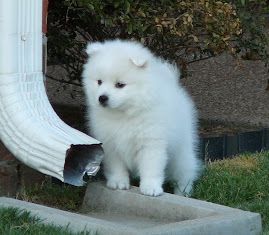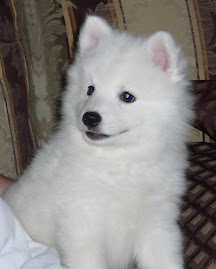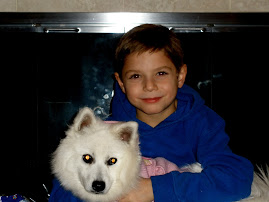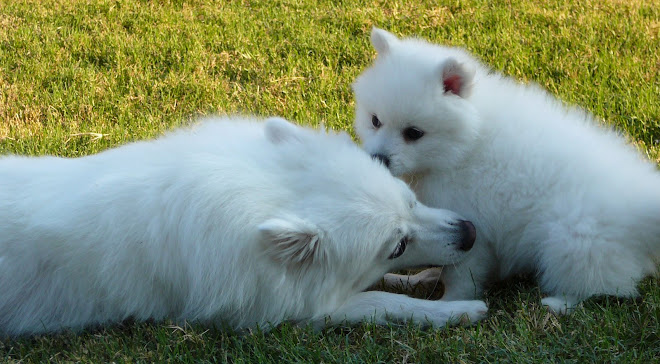No doubt you've heard about the havoc a dog with Separation Anxiety ("SA") can reek on your home, not to mention the horrors that your furry loved-one suffers psychologically. According to Claws & Paws Veterinary Hospital, U.S. veterinary practices estimate that approximately 14% of canine patients exhibit one or more signs of SA. This behavioral disease is second only to aggression. The good news is that separation anxiety is a treatable disorder. However, to learn how to help your dog deal with his complex, your first have to understand what causes this syndrome and its origins.
"When separated from their social group, most pups whine, bark or howl. These sounds are referred to as distress vocalizations." says Peter J. Volmer, from the Animal Care Center Veterinary Clinic. "In the wild, these sounds increase the chances that a puppy will be reunited with the pack. If a pup’s movement is restrained while it is isolated, it will respond with escape behaviors such as digging, thrashing about, and chewing. These behaviors have obvious benefits for survival."
According to Peter Volmer, many pet owners inadvertently elicit these behaviors by placing a young puppy in a barricaded kitchen or other unoccupied area of the house. Sometimes these owners provide a ticking clock, a radio, or a hot water bottle to “comfort” the animal. This entire procedure is unnecessary at the least, and can harm the puppy psychologically and physically if emotional behaviors indicating stress are allowed to persist or worsen. This effect can lessen if the puppy's sleeping crate is placed in a bedroom with a family member.
However, it is important to note that SA can also occur in adolescent dogs, especially those adopted from a shelter; middle-aged dogs, though that is less common; and in older dogs. The theory regarding older dogs with SA is that as dogs age, they may lose sensory perception , such as hearing and sight, and thus they become more dependent on their owners, resulting in possible anxiety when they are separated or their owners are out of view.
In older dogs, prolonged and constant human contact is frequently seen in cases of SA. Many dogs are so strongly attached to their owners that they will follow them from room to room to maintain close proximity.
Signs of SA can range from mild to severe:
Distress vocalization—howling, barking, whining
Inappropriate elimination—urination, defecation
Destructive behavior—chewing, digging
Anorexia/ “depression” or inactivity
Psychosomatic/medical consequences—excessive licking of haircoat, pacing, circling
Hyperattachment—excessive greeting behavior, constant pestering of owner
Hypersalivation
The behaviors associated with separation anxiety often occur within a short period of time after the animal is left alone, a unique feature which distinguishes separation anxiety from other behavioral disorders. Please note that a thorough history and physical examination (including blood tests) are needed to definitively diagnose separation anxiety and rule out other medical or behavioral differential diagnoses.
SA can be treated by both medical intervention and behavioral modification/training. The course of treatment should be determined on a case by case basis depending upon your dog’s response to the therapy/treatment first chosen. Improvement may be seen within a few days, and typically is observed within one month or less of treatment. A standard length of treatment duration is two months, with some dogs needing longer treatment times. Because dogs with SA are truly suffering and can do real harm to themselves, treatment is the only humane option.
Behavioral modification techniques of treatment are based upon the principles of desensitization and counter-conditioning. This training is not hard, nor does it take very long to complete each session. One popular technique is detailed below*
Step #1: Practice leaving your dog alone for short periods of time. Pick up your keys and leave for 1 minute.
Step #2: Gradually increase the amount of time you stay away. This will accustom your dog to your absence
Step #3: Avoid overly emotional good-byes and greetings. Instead, pat your dog on the head and offer a quick good-bye or hello
Step #4: Keep your dog confined in a safe area while you are away. Be sure to leave a bowl of water and plenty of chew toys.
Step #5: Exercise your dog for an hour each day in places other than your yard or home. This helps your dog feel comfortable in other locations and lets her blow off steam.
Step #6: Praise your dog often to build self-confidence, rather than punishing her for exhibiting frightened behaviors. Punishment only increases anxiety and makes the situation worse.
According to Paws & Claws, before beginning treatment, it is important to identify which behaviors are to be assessed and what level of progress is expected. While most dogs do respond well to treatment for separation related anxiety, treatment failures do occur. Signs of separation anxiety may return with changes to the dog’s environment or routine. Common precipitating factors include marriage, moving to a new house, a new baby, and changes in schedules (children going back to school or a new job with different hours). In such instances, additional treatment may be needed.
In all cases of canine separation anxiety, any form of reprimand or punishment is contra-indicated and may actually increase the dog’s anxiety.
 * Technique taken from ehow.com
* Technique taken from ehow.com












